AVP athletes are emerging from the offseason, getting on the sand and shaking the rust off. But that doesn’t mean there hasn’t been work over these past three months.. The preparation, maintenance, and rehab done during the fall can make or break an athlete. Lifting, stretching, and staying healthy create the foundation upon which a season is built.
When approaching this topic, two names came to my head. First – the oldest winner in AVP history (by a landslide), the unbreakable and evergreen John Hyden. The man is nearing 50 and outperforming players less than half his age. How does he do it?
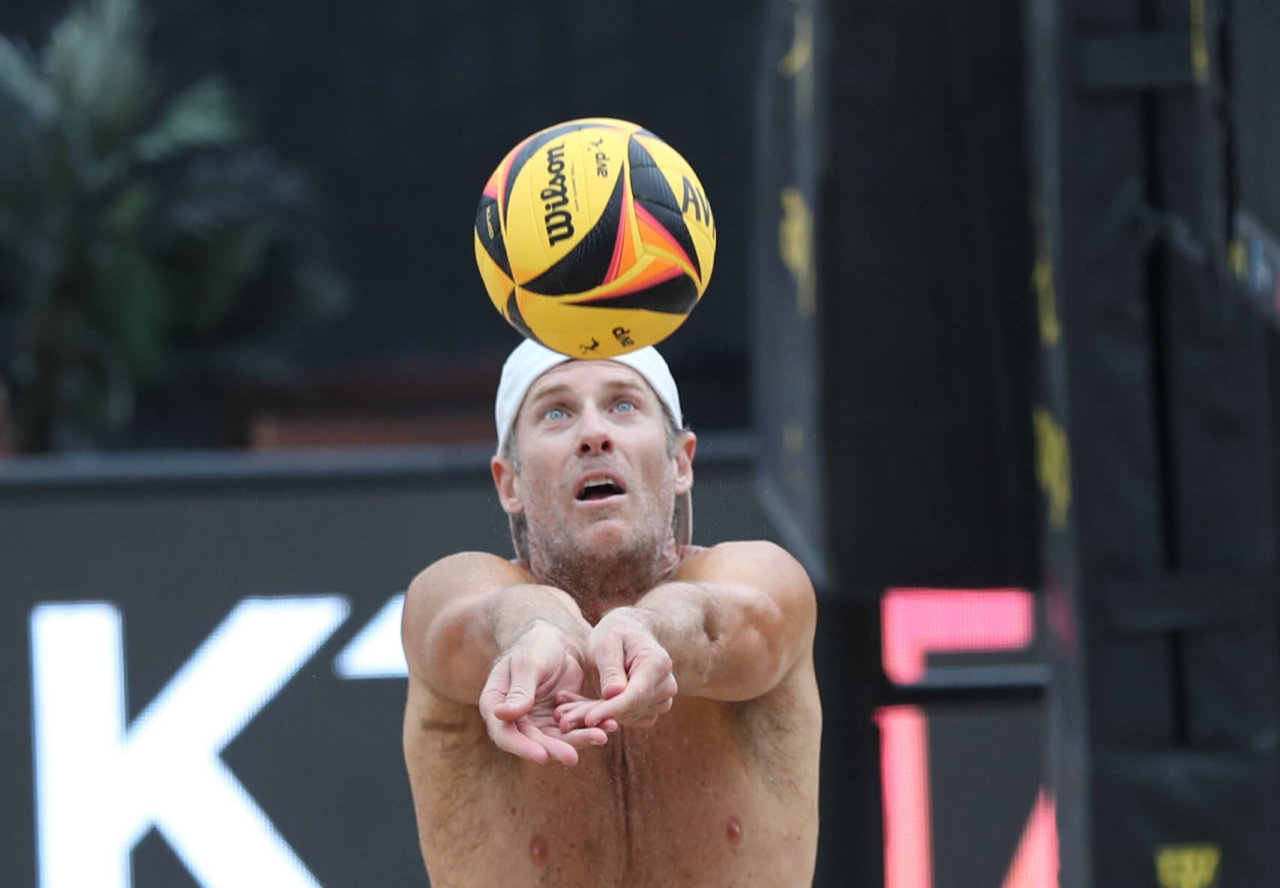
“The last 15 years,” he says, “there hasn’t been much of an offseason as it pertains to the gym. At my age, everything physical is difficult. There is always prehab/rehab going on – stretching, rolling out, and band work.
“The toughest part is mental,” he continues. “Getting in the gym every day and doing what needs to be done to still play at a high level. Especially these last few years with the long offseason and not knowing when or if there would be events. That’s been really tough. Sometimes I’m not sure how I get through it mentally. Just have to make sure I take days off when my body is telling me to.”
Last week, I mentioned how most athletes start preseason in January. I said “most” thinking of Hyden as the outlier. He starts later than any other player I know, six to eight weeks before the first event (which should be a hint to other players who want to play forever; just saying).
In a way, his preseason happens in the gym. About two to three months before touching the court, he intensifies his gym routine, working up to heavier weights and more dynamic movements. He needs to find his sand legs once he gets to practice, but his foundation is rock solid.
“I start with tons of reps and cardio. I always build my cardio into the drills I’m doing so I don’t have to do it off the sand. Mentally this is very difficult, too. Just getting out and moving around on the sand and being motivated when it’s cold out is a whole other animal.” Hyden lives in Nashville, TN. So when he says cold, he’s talking about more than a brisk LA morning.
I asked Hyden what the best piece of advice he’s ever received was. I love his answer: “I’m not sure I’ve received any advice about longevity or rehab since I’m the one paving the way. It’s more about what I’ve learned through the years to make it happen. Most came from my trainer Mykel Jenkins about supplements, rehab, and eating regimen.
“Also – learning your body, how and when it needs rest is a huge step. I can’t remember a day when I walked into my trainer’s garage, and he didn’t ask, “How’s the body feeling?” From there, we’d roll with the workout going off how I felt. I feel like too many guys and girls overtrain, and there’s too much quantity without quality. Not to mention too much time on social media instead of their game.” Boom. Roasted.
One of the young guns learning these lessons of quality over quantity and building a foundation is Katie Spieler. She’s the other name I thought of when approaching this topic.
Katie is one of the hardest workers on Tour. Sunup to sundown, she’s either playing, biking, walking, lifting, or working. Katie is always on the move, always building her game or her club – East Beach Volleyball Academy. But it all came to a head last summer when she tore her ACL and had surgery. The injury halted her life and slowed her down (but she was still maybe the most active recovering patient I’ve ever seen).
The first two months were physical therapy, stretching, and late-night ocean swims. Once Katie was two months out from surgery, she started going to a scientifically-based gym called P3 Sports Science in Santa Barbara. Four times a week, Katie is in there testing, lifting, and getting stronger. She’s already started heavy Olympic lifting, having built back her strength with bodyweight movements and exercise.
“Getting back into weightlifting has been huge,” she says. “This whole process has really shown me that I need to emphasize being strong, lifting, and being in the gym just as much as I need to focus on volleyball.
“Before, I was playing so much. I was doing some workouts, but not nearly as much as I now realize I need. Going into hopefully playing this season, I’m going to stay on the path of being as strong as I can. Of course, I’ll play and train, but I can trust that I’ve done those things for so many years. So I’m thankful for having learned that.”
Katie has used this injury to rebuild her foundation stronger, a lesson she’ll take into future offseasons. “Once we get into season, we’re flying here and there and playing in so many tournaments, playing on-call almost. It’s harder to maintain your strength and recovery and rehab.
“My mindset shift with this injury is to always take the offseason to get really strong and build the base. Then during the season, I can just worry about playing and maintenance. That will stick with me. It’s good to learn early on. A lot of older players learn that and adjust, so I’m glad to know it now.” Hyden would be proud.
As important as strength training is, stretching is its equally vital twin. Breaking down muscle to make it stronger requires lengthening and stretching to prevent future injury. As Katie is recovering, she’s taken great care to protect her newly healed knee.
I’m always in need of a good stretch, so I asked Katie to give a few examples of stretches that have kept her in the gym. Full disclosure – the names Katie gives these aren’t technical. She just makes them up as she goes (as we all do).
- Single-Leg Lunge with Shin Up the Wall Stretch: Situate one leg with the knee on the ground next to the wall and the shin up the wall. Bend the other leg to create a base. Target quad by getting knee and shin as close as possible to parallel with the wall. Hold for a minute each leg. You can get a better groin stretch by lunging towards the ground and pushing your hip towards the floor.
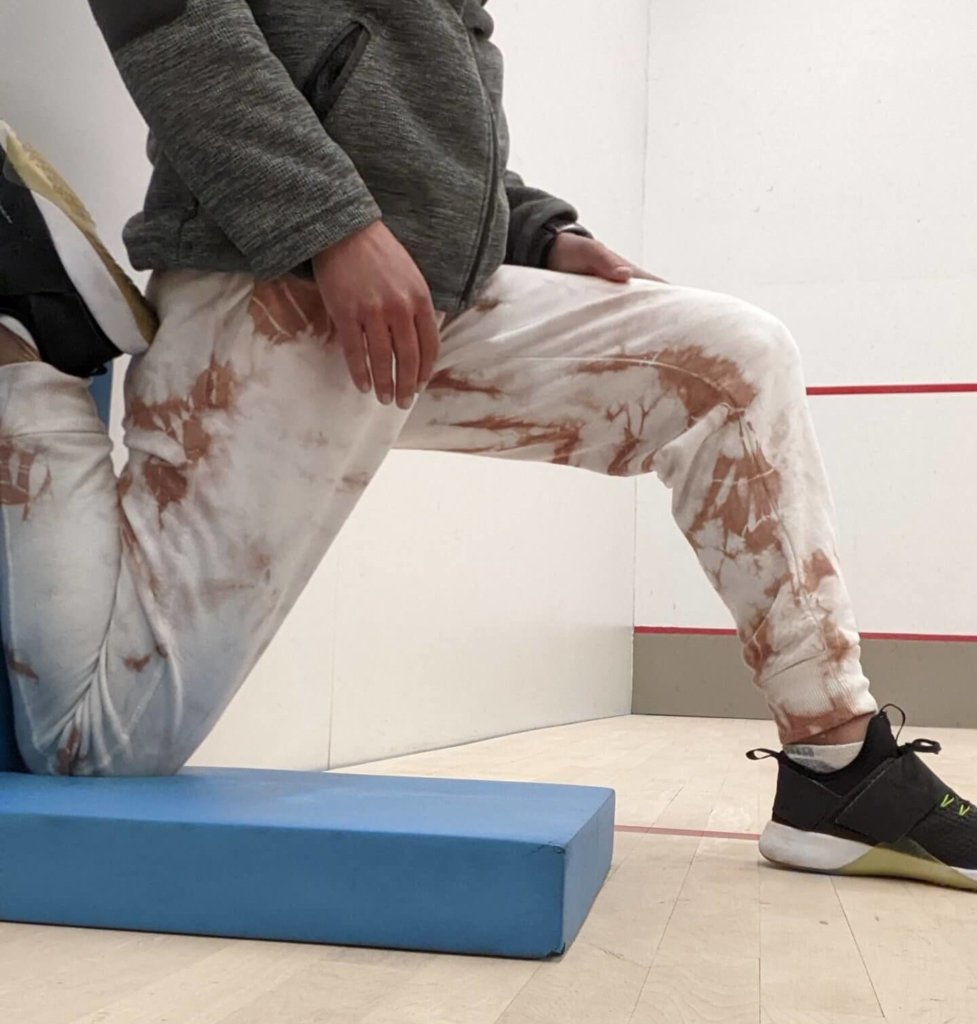
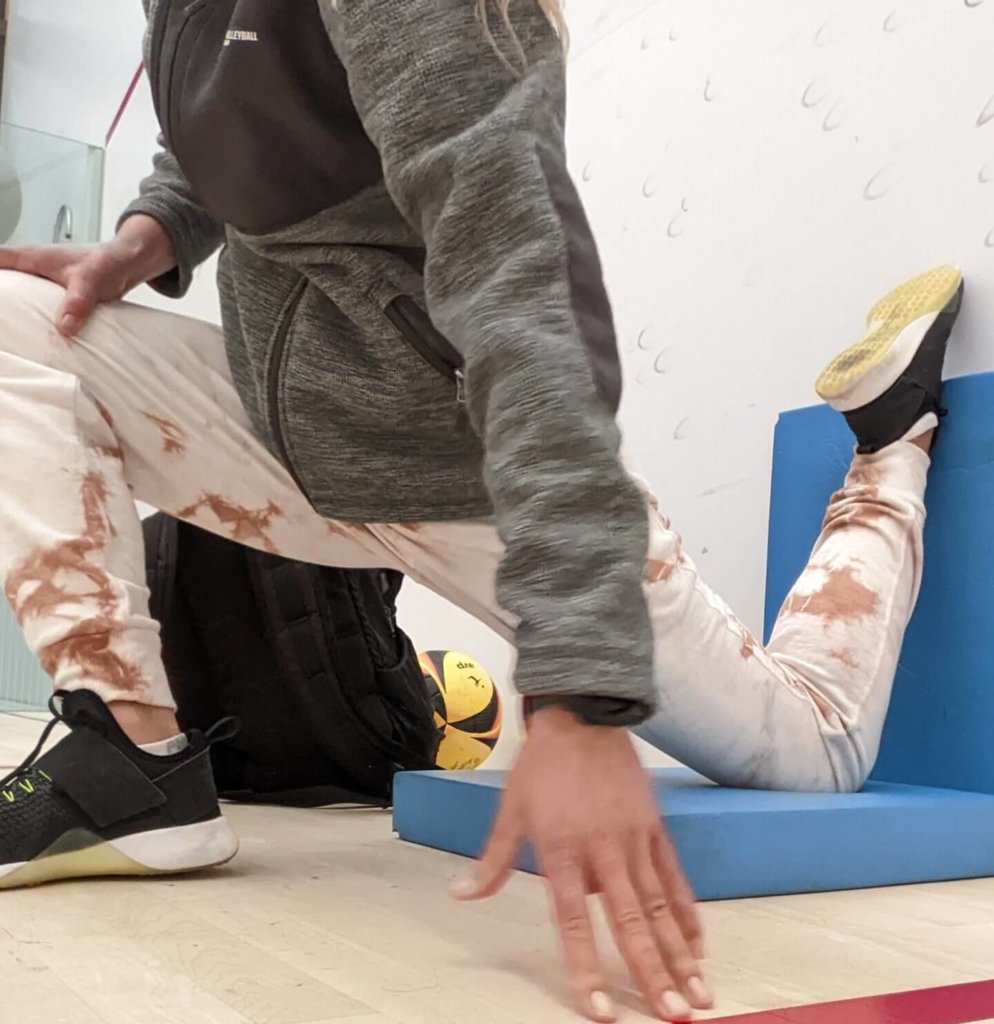
2. Leg Pumps: Lay on your back and grab under one of your thighs, keeping the leg bent. The other leg is straight on the ground. Keep your foot flexed as you extend and contract. Should be a nerve-heavy stretch focusing on the hamstring.
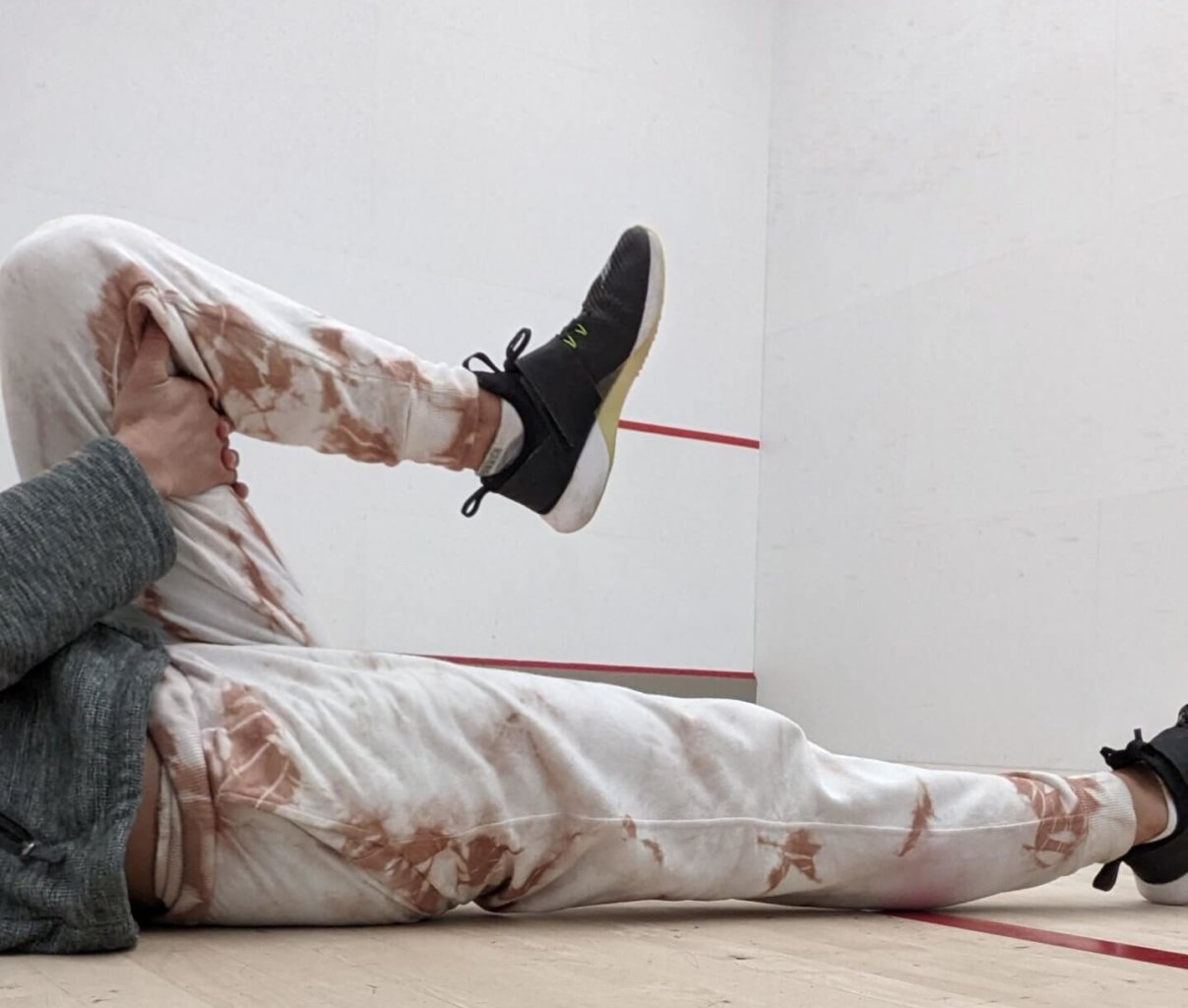
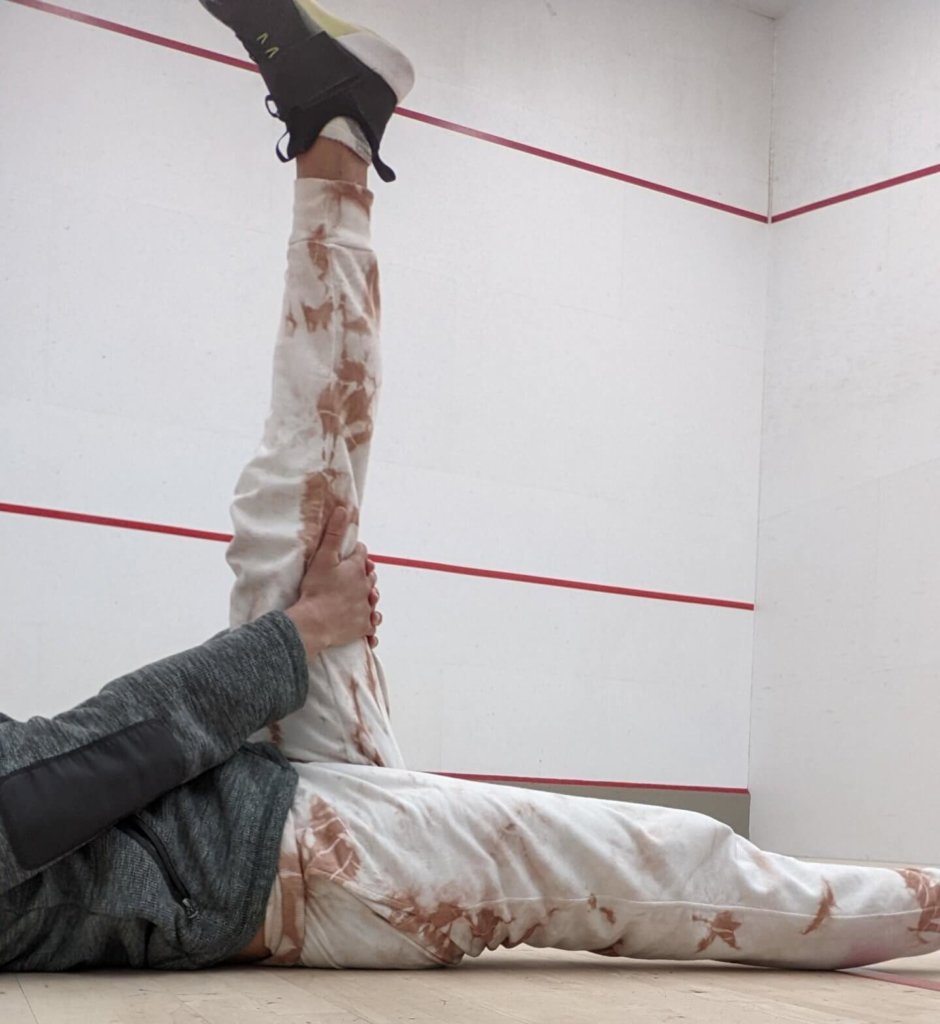
3. Strap Stretch: Lie on your back, with one leg straight on the ground. Loop the stretching strap over your other toe or midfoot and extend straight in the air, making an L shape. Either do a static hold – go as far as you can get back toward yourself pushing your toe down – or do pumps to engage the muscles while stretching. Contract your quad as you pump.

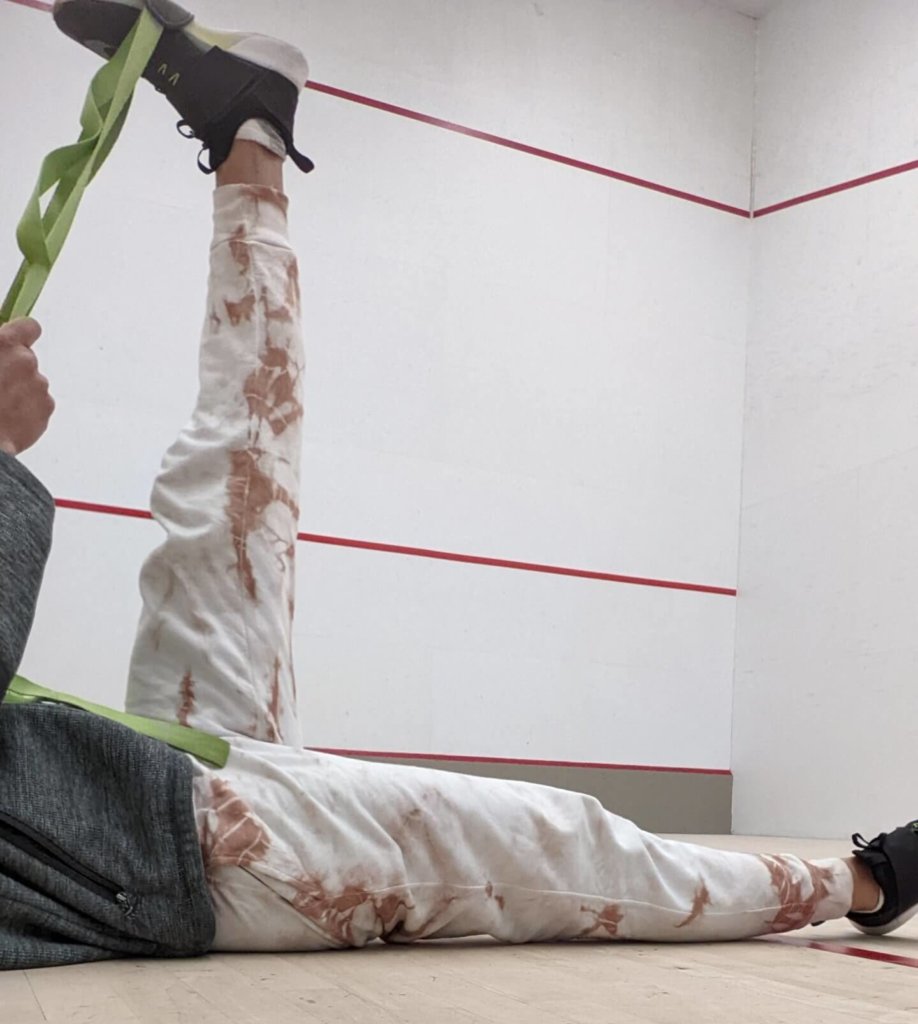
Every athlete’s offseason is different; that’s the beauty of the sport. But lessons from the man who’s paving the way and the woman who’s returning from surgery lightning fast are invaluable.